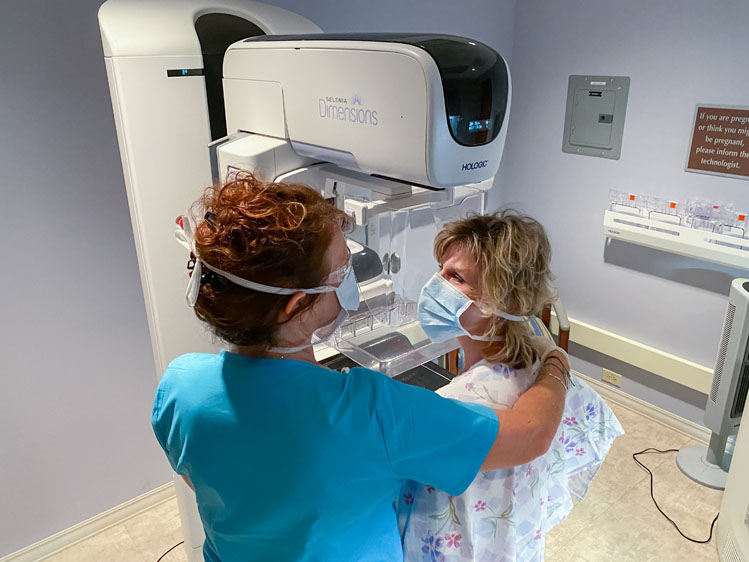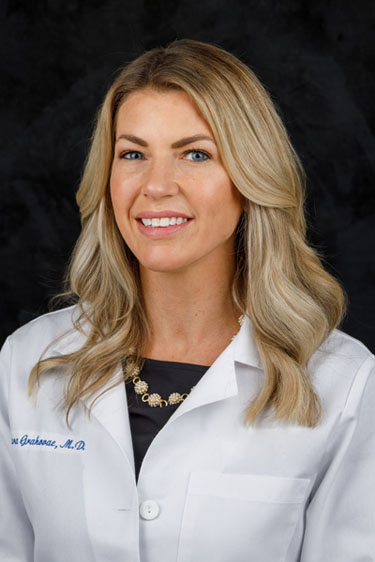
Nothing strikes fear in a woman like those four dreaded words—you have breast cancer.
It’s no wonder given this sobering statistic: More than 43,000 women die from breast cancer in the U.S. each year. Surpassed only by lung cancer, it’s the second deadliest cancer in women.
Separating Fact From Fiction
Think you’re in the clear because you don’t have a family history of the disease? Think again. According to the American Cancer Society, only 5 to 10 percent of breast cancer cases are thought to be hereditary.
It’s also a myth that hereditary cancer is passed down from the mother’s side of the family. In fact, it can come from your father or mother and may even skip a generation. It’s important for your doctor to know about everyone in your family who has had cancer. "A history of breast or ovarian cancer in families may be related to a gene, such as BRCA 1 or BRCA 2, that is passed down through generations," says Dr. Tara Grahovac, a board-certified, fellowship-trained breast surgeon with the Beaufort Memorial Breast Care & Surgery Program. "Breast cancer risk has also been associated with other genes, so be sure to provide your physician with a complete family history on all cancer diagnoses."
Another commonly held belief is that only older women get breast cancer. The numbers tell a different story. About 11 percent of all new cases of breast cancer in the U.S. are found in women younger than age 45.
While breast cancer can occur at any age, the risk does increase as you get older. The probability of a woman in her 30s being diagnosed with the disease is 1 in 227. At 40, it’s 1 in 68. It increases to 1 in 42 at age 50. By the time you reach 70, the probability jumps to 1 in 28.
So, what is the biggest risk factor for breast cancer? Simply being a woman.
"In the U.S., the lifetime risk of breast cancer is about 12 percent. This means that for every eight women who live to the age of 85, one will be diagnosed with breast cancer at some point during her life," says Dr. Grahovac.
Steps You Can Take to Lower Your Risk
But rather than worry about what you can’t control, focus on what you can. Some breast cancer risks are related to lifestyle behaviors, such as diet, exercise and alcohol consumption.
To lower your risk, the American Cancer Society recommends you:
- Limit alcohol to one drink per day.
- Maintain a healthy weight throughout your life.
- Don’t smoke.
- Be physically active. You should get at least 150 minutes of moderate intensity or 75 minutes of vigorous exercise each week.
- Eat a healthy diet with an emphasis on plant foods. Limit how much processed and red meat you eat and choose whole grains instead of refined grain products.
Early Detection is Key
Screening tests are recommended to help you find cancer early, when it’s most treatable.
"Women at average risk of breast cancer should start having annual mammograms at age 40," Dr. Grahovac says.
Because 10 to 15 percent of breast cancers are not seen on mammography, you also should have a clinical breast exam with a physician every three years if you’re in your 20s or 30s and every year if you’re 40 and older.
Self-exams are important, but you should be looking for more than just a lump on your breast. Some cancers don’t form a lump or are too small to be felt.
Other signs and symptoms of breast cancer can include inversion of a nipple, discharge, dimpling or a bulge in the breast skin, an irritated or scaly nipple, rapidly increasing pain with redness or rash, dramatic increase in the size of one breast or a change in shape or vein pattern.
Your best protection is early detection. Breast cancer found early can usually be treated successfully.
Due for a screening mammogram? Submit an appointment request or call 843-522-5015 to schedule your exam at our Breast Health Centers in Beaufort or Okatie.
Updated: April 2025

